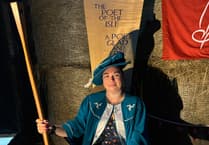The Isle of Man has fewer wild mammals than England, Ireland, Scotland and Wales, and a dearth of medium-sized meat eaters like foxes and badgers in the food chain is one of the reasons why we have so many feral cats.
Nor does the island have any native common shrews; but it is home to pygmy shrews.
Shrews are, officially, the UK’s smallest mammal, and they play a hugely important role in the food chain.
They are a source of food for larger mammals (although domestic cats don’t seem to like the smell or taste of them and so they simply catch, rather than eat, them) and they play a vital part in the diet of owls and birds of prey.
Pygmy shews can’t stop eating. Their metabolism is so fast that two hours after a meal they are starving again.
Hibernation is out of the question because they are too small to store fat reserves, and so they have to remain active during the winter months, eating ceaselessly to keep warm.
They particularly enjoy a diet of beetles, spiders, snails and woodlice, and they need to eat up to 125% of their body weight each day in order to survive. Their long, whiskery snouts (which make them easy to distinguish from mice) are ideal for probing in leaf litter and soil, and they compensate for the shews’ poor eye-sight.
They can emit high-pitched squeaks when defending their territory, particularly during the summer months, and they only live for about 12 months - just long enough to have one or two litters
But all is not well in the shrew world, in the UK at least. The greater white-toothed shrew (GWTS) was discovered in the north east of England in October 2022, when it was declared by the British Mammal Society to be the first non-native mammal to become established in the UK since the American mink in the 1920s.
The GWTS is normally found in western continental Europe, on some of the Channel Islands, and in a small part of north Africa; which means that the Sunderland population is the most northerly in the world.
The newly discovered British GWTS probably originated when shrews were accidentally transported in consignments of plants, fruits or vegetables from continental Europe.
The impact of non-native species on the ecosystem is sometimes difficult to measure (take wallabies in the Isle of Man, for example), but, sadly, it is likely that the ‘new’ shrews will have a detrimental effect on existing UK shrew populations.
Scientific research in Ireland has demonstrated that the GWTS has wiped out colonies of the, much smaller, pygmy shrews.
If you are a keen wildlife observer, or the owner of a cat that likes to hunt, and you think the shrew you have spotted looks different from the ones you normally see, then a rule of thumb is that the greater white-toothed shrew has a distinctive, rounder head that makes it look like a Clanger.
The Mammal Society launched a citizen science project last year, ‘Searching for Shrews’, in order to track the spread of the GWTS and its impact on ecosystems.
It encourages people to analyse barn owl pellets for traces of jawbones and skulls of the small animals they have consumed, which is made easier because owls (and birds of prey) regurgitate fur and small bones. The pygmy shrew has red-tipped teeth because of iron deposited in the enamel, but the GWTS (as its name suggests) does not.
So far, the GWTS has been confirmed both in the North East and in Nottinghamshire, and so it has stated to spread. For more information about the ‘Searching for Shrews’ project, and how to take part, visit the Mammal Society’s website - mammal.org.uk.


.jpeg?width=209&height=140&crop=209:145,smart&quality=75)
.jpeg?width=209&height=140&crop=209:145,smart&quality=75)
